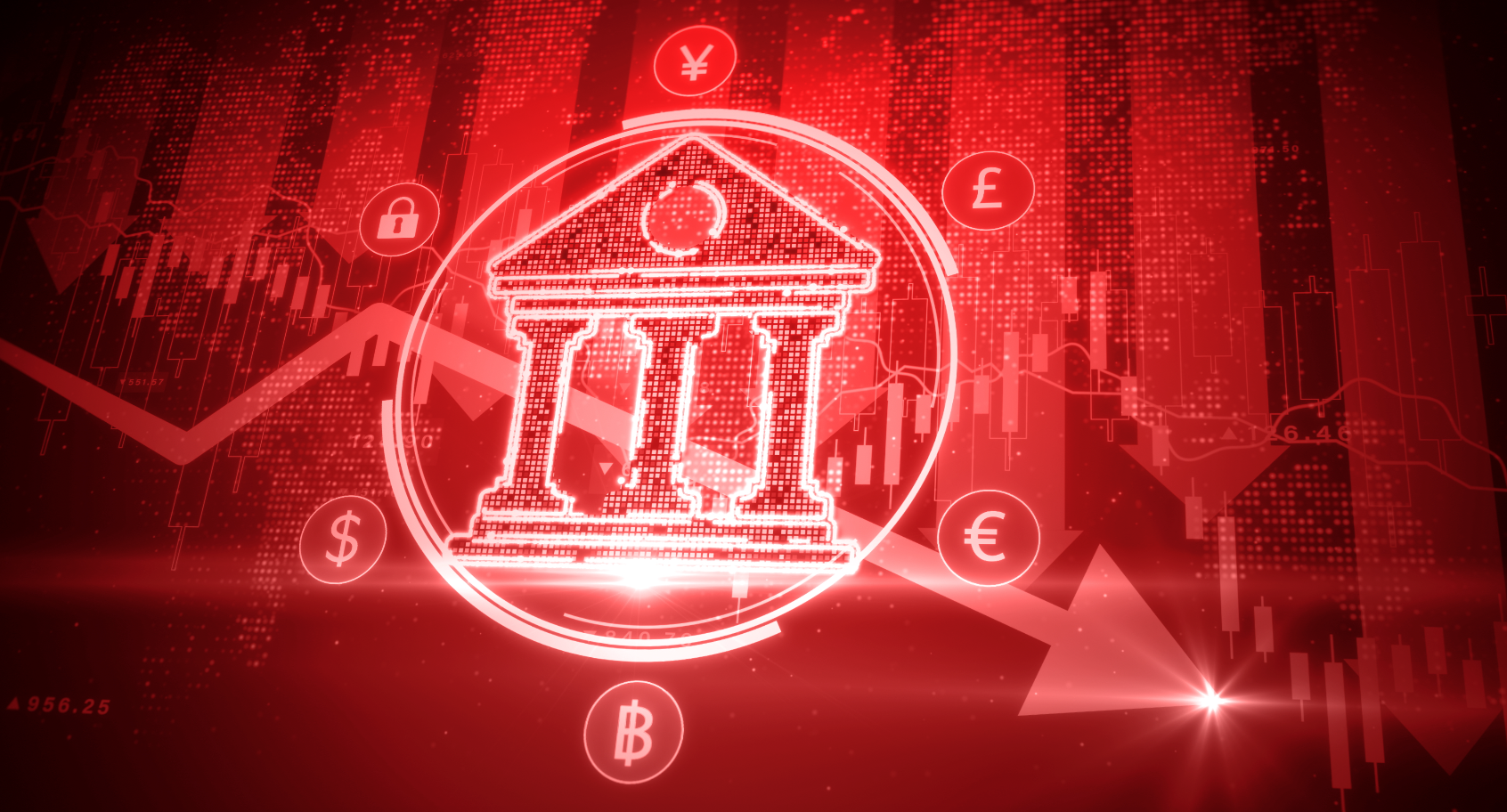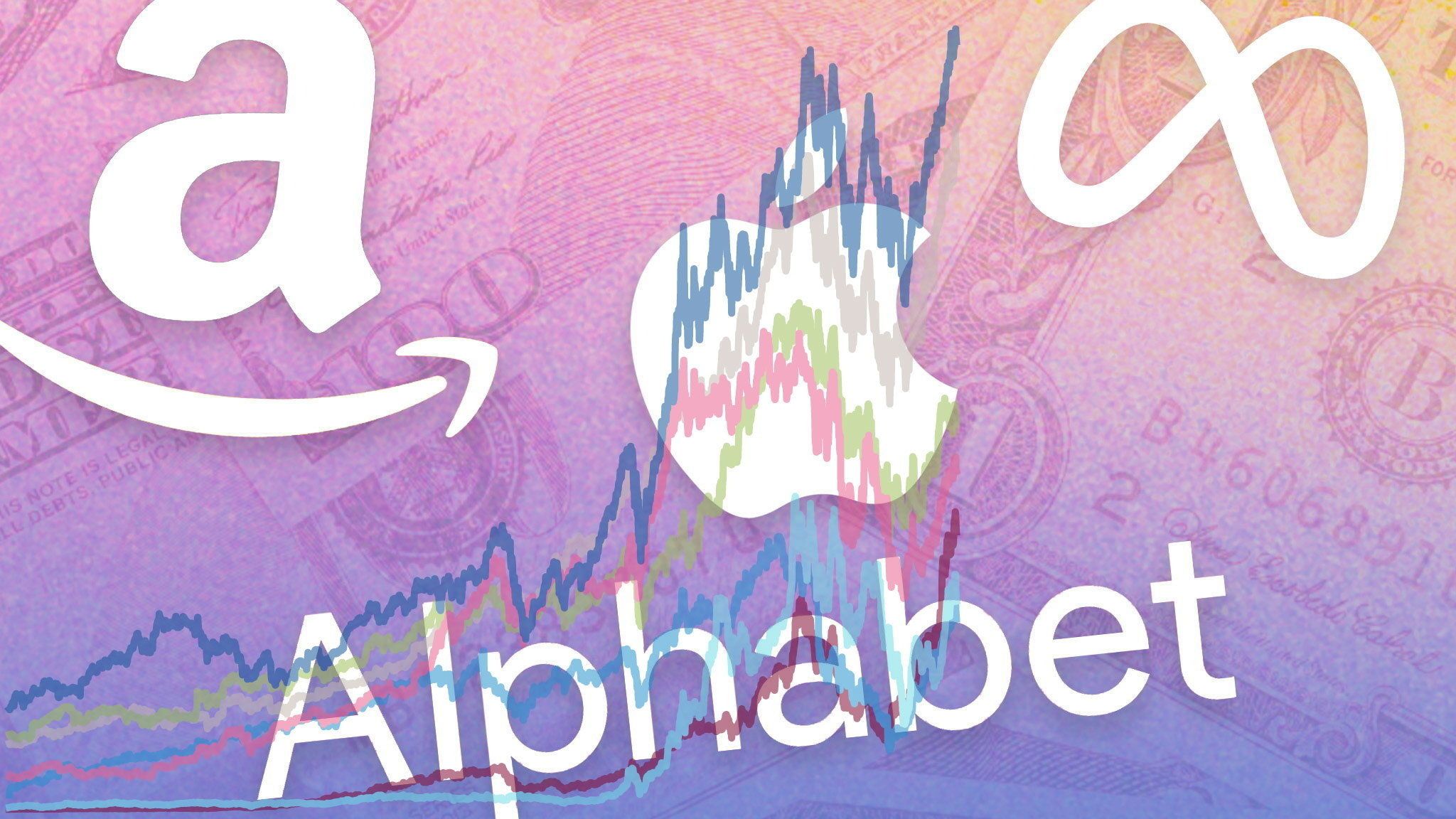Global equities: navigating the markets in uncertain times
Why investors need to position themselves for a new regime


Compared to 2022, global equities have experienced better growth this year, but markets still face headwinds – economic uncertainty and geopolitical tensions, to name two.
And with talks of a possible recession in 2023, investors will be wondering what approach they should take towards global equities.
This report is worth 30 minutes of CPD.

Nearly two-thirds of advisers believe global recession will occur in 2023
Nearly two-thirds of advisers believe there will be a global recession before the end of 2023, according to the latest FTAdviser Talking Point poll.
Almost two-thirds of those who responded (64.8 per cent) say it is extremely likely or somewhat likely.
Just 6.53 per cent say it is unlikely, 16.1 per cent say it is somewhat unlikely, while 12.6 per cent say neither likely nor unlikely.
Looking at the impact of a recession on global equities, James Thompson, director at Becketts Financial Services, says he did not necessarily equate recession with poor global equity performance.
“Firstly, suppose we do suffer a global slowdown. In that case, it's unlikely that all economies will enter and exit recession simultaneously; therefore, good strategic and tactical fund management should be able to navigate through these waters,” Thompson notes.
"Secondly, markets generally price recession before it becomes a reality. The point at which we enter a technical recession is likely to be accompanied by fiscal and monetary policy stimulus, which generally leads to a market rally."
ima.jacksonobot@ft.com

There have been concerns that cuts to oil production by oil-producing nations could fuel a global recession. (ivankmit/Envato Elements)
There have been concerns that cuts to oil production by oil-producing nations could fuel a global recession. (ivankmit/Envato Elements)
Global equities: why investors need to position themselves for a new regime
Global stocks are seeing better growth this year so far, compared with 2022.
According to data from MSCI, global equity markets bounced back strongly this year; the MSCI ACWI Index has returned more than 7 per cent so far this year.
Meanwhile, more than 50 per cent of the total returns of the index this year has been attributed to just seven stocks: Google parent company, Alphabet; Amazon; Apple; Meta Platforms; Microsoft; Nvidia; and Tesla – dubbed the 'magnificent seven'.
But how sustainable is this level of growth in the face of continuing market uncertainty, global recession fears, and the ever-widening number of geopolitical conflicts?
Instability persists
“As things stand, history might look back on 2023 and see global equities up low double-digits, with fairly well contained drawdowns by historic standards, and think it must have been business as usual for the asset class.
"But that couldn’t be further from the truth,” says Francois de Bruin, co-manager of the Global Equity Endurance Fund at Aviva Investors.
“We’ve seen the second, third and fourth largest US bank failures in history, all in a matter of weeks. We’ve seen revolutionary technology in artificial intelligence propel the so-called 'magnificent seven' higher, while small caps struggle to generate any returns at all.”
In May this year, First Republic Bank became the second-largest US bank to fail; Silicon Valley Bank and Signature Banks, which both failed two months prior in March, became the third and fourth.
De Bruin adds: “We’ve seen large changes in consumer behaviour as a result of post-pandemic normalisation, while advances in anti-obesity drugs resulted in the emergence of Europe’s new largest company.
The magnificent seven may still have life in them, they are fantastic companies, but prudent investors may want to diversify.
"In the meantime, all of this has taken place against the backdrop of interest rates jumping to their highest levels in over a decade.”
Examining the growth of global stocks, Jacob de Tusch-Lec, co-manager of the Artemis Global Income Fund, explains that the number of US stocks that have outperformed the S&P 500 on a 12-month view is the lowest it has been in 25 years.
Yet the index is up nearly 14 per cent this year, and most of that performance has come from a handful of giant tech stocks, like Nvidia, which is up a "staggering 217 per cent, Meta up 160 per cent and Tesla up nearly 150 per cent".
Alphabet (Google), Amazon, Apple and Microsoft are all up between 35 per and 57 per cent.
According to De Tusch-Lec, more recently however, the market has “broadened out” a little and he has seen other names outperform, such as those in the energy sector.
Sustainability of the magnificent seven
But he notes that in the longer run, a narrow market driven by the fortunes of seven companies is not sustainable.
This is because, De Tusch-Lec says, although they are “great companies” with very strong market positions and relatively capital-light business models, their valuations are priced on the assumption that they will go back to the same level of growth they enjoyed in the low interest rate decade of quantitative easing, which was 10-30 per cent per cent revenue growth (adjusted for inflation) a year.
He adds: “There’s a big difference between paying 30x earnings for a company like Apple growing at 20 per cent a year when interest rates are virtually zero and paying the same multiple when earnings growth has halved and rates are 5 per cent.
“Income funds, which are naturally underweight these stocks because of their paltry dividends and growthier characteristics, have lagged this year, but if we return to a world where earnings and cash flow matter – and I think we will – then that could change.
“The magnificent seven may still have life in them, they are fantastic companies, but prudent investors may want to diversify. A lot of investors have more exposure to US-based quality growth and software across their portfolios than they realise."
De Tusch-Lec says sectors more traditionally linked with income, such as banks, energy, mining and industrials will become far more important going forward.
For De Bruin, the sustainability of returns for each of these seven stocks will depend on their respective ability to continue to grow cash flows, while the current valuation for each stick must be assessed in that context.
He adds: “It is rare to see such strength from such a narrow group, however strong returns themselves are not necessarily a precursor to future underperformance.
While the Fed might be close to the end of the hiking cycle, it is far from beginning a cutting cycle. We shouldn’t over-obsess about calling the business cycle right.
“What is clear is that all seven companies benefit from network effects, ie as new customers or members are added, the stronger the competitive barriers to entry become.
"So we would not be surprised to see current strength translate into more strength, providing further growth for the group. The important thing is making sure valuations still provide some margin of safety.”
Recession in 2023?
In the latest fourth quarter 2023 outlook report by investment management company Nuveen, chief investment officer Saira Malik notes that global equity markets retreated in the third quarter, as negative results in August and September more than offset July’s positive returns.
Optimism that central bank tightening was nearing an end helped the period begin on an upbeat note, but concerns about higher for longer interest rates, coupled with lacklustre economic growth, intensified as the quarter wore on, says Malik.
She adds: "Despite a challenging third quarter, global equities have still advanced during 2023, thanks to better than expected economic data and forecast-topping earnings in the face of rising interest rates and uncertainty over the path of monetary policy.
"Looking ahead, it appears that equities have priced in an economic soft landing, based on an expected recovery in corporate profits."
Yet, while everyone is watching very closely for a global recession that has not made an appearance, if and when it does happen, it is difficult to predict what it will look like.
But one thing many agree on is not to draw too many parallels with the global financial crisis of 2008, because that was borne out of excesses in the real estate and credit markets with a subsequent withdrawal of liquidity.
De Bruin says: “Liquidity is unlikely to be a problem this cycle as policymakers have shown a keen willingness to step in whenever needed.”
De Tusch-Lee also notes that many businesses are much better prepared for a recession.
“Frankly, a year ago we were being told by ‘the market consensus’ that today we would be in the midst of a recession and the US Federal Reserve would be cutting rates aggressively.
“As it happens, the US labour market is in rude health, there’s no global recession, and while the Fed might be close to the end of the hiking cycle, it is far from beginning a cutting cycle. We shouldn’t over-obsess about calling the business cycle right.
“Recessions are tough to predict the timing of, and it’s even harder to predict their severity unless you are in the middle of them.
"Other factors are more important for our portfolio positioning, sector exposures, and stock picking: not least the unwinding of QE, the move towards de-globalisation and the heightening of political tensions."
Resilience amid a recession
When it comes to which sectors and industries are best placed to withstand a potential recession, De Bruin says asset-light companies with business-critical services are particularly well placed to deliver recurring cash flows and may even grow revenues despite a recession, while business-critical data and workflow solutions companies, design software businesses, or core banking processing and solutions are likely to outperform in such a scenario.
He adds: “Consumer and business sentiment are likely to be suppressed, leading to a lower velocity in activity in general, and order books and backlogs adjusted lower.
"Reflexivity in capital markets are likely to reflect concerns over growth, leading to higher cost of capital and a slower funding environment.
“And supply is likely to outpace demand in most markets, leading to potential price discovery lower in goods and services. Of course, how central banks react will invariably have a role to play in how deep or prolonged any economic downturn might be.”
Maslow's hierarchy of needs
Using the principle of Maslow’s hierarchy of needs – a model for understanding the needs that motivate people, from the essentials to the psychological, then aspirations – De Tulsch-Lec says it can help investors to understand which sectors are best placed to withstand a potential recession.
He adds: “The essentials are food providers: shipping, food processors and commodity suppliers. Then we consider defence and energy before moving up to leisure and luxuries.
"It’s not glamorous, but the providers of the essentials, particularly defence companies like BAE Systems, as well as commodity producers, seem to me to be where investors should be now."
History might look back on 2023 and see global equities up low double-digits, with fairly-well contained drawdowns, and think it must have been business as usual. But that couldn’t be further from the truth.
To illustrate his point, De Tulsch-Lec points to the period of 2017-22, when luxury goods conglomerate LVMH – in other words, a company at the very top of Maslow’s pyramid – delivered a return of about 22 per cent a year (in USD), while BAE Systems delivered less than half at 10.5 per cent.
This year on the other hand, consumption of luxury goods products has come under some pressure – year to date LVMH is down 3 per cent, while BAE Systems is up 28 per cent.
De Tulsch-Lec says: “Clearly this is testament to the fact that the world has become a more dangerous and less pleasant place to be, sadly. Given my concerns about the magnificent seven, I have to reiterate that valuations matter. In a recession it’s the over-priced stocks that tend to fall furthest.”
Minimising risk
To minimise risk when investing in global equities, particularly in volatile or uncertain market conditions (also amid increasing geopolitical conflicts), Louis Florentin-Lee, co-manager of the Mid Wynd International Investment Trust, says if investors focus on the fundamental characteristics of the companies they invest, experience shows they do not have to worry about what is happening in the economy.
His approach is to invest in companies he calls "compounders". These are businesses that generate persistently high returns on capital and reinvest back into the business at similar returns to drive future growth.
Florentin-Lee adds: “What we’ve found over the years is that compounders can perform well in an uncertain environment, whether recession or more difficult economic conditions.
"They have barriers to competition, which gives the company pricing power and the ability to maintain profit margins despite inflation-led cost pressures.”
Meanwhile, Natasha Ebtehadj, co-manager of the Artemis Global Select Fund, says her team’s approach is to build their portfolio around a series of secular growth themes, like digital finance, online services and companies playing a vital role in the transition to a lower carbon world.
This, she says, helps growth but also mitigates risk in a global downturn, as long as investors buy at sensible valuations.
Ima Jackson-Obot is deputy features editor at FTAdviser




AI revolution: who’s profiting now from generative AI?
With artificial intelligence taking the world by storm, Schroders considers which types of tech companies may be best placed to reap the rewards from current trends.
What is generative AI?
Generative AI, the most well-known example of which is ChatGPT, has sparked peoples’ imaginations.
Unlike traditional AI, which analyses past data for patterns and can be used to glean insights from or make predictions, GenAI uses existing data to generate entirely new content, whether that is in the form of text, images, audio or video.
Alex Tedder, head of global and thematic equities at Schroders, says: “Financial markets are particularly excited about the application of GenAI to businesses, the productivity gains and cost savings that can realised.”
What kinds of companies operate in the GenAI segment?
There are a number of different types of technologies that are needed to build a generative AI application, which are collectively referred to as a technology stack.
There are four layers to the stack:
1. The compute layer is the base of the stack. GenAI systems require large amounts of computing power and storage capacity to train and run the models.
Hardware (semiconductor chips) provides the computing power and cloud platforms like Amazon Web Services, Microsoft Azure or Google Cloud Platform provide services like virtual machines and storage.
2. Next comes the foundational model layer. Foundation models are systems with broad capabilities that can then be adapted to a range of different, more specific purposes. Arguably this is the most important layer of the GenAI stack.
These foundation models are large statistical models built using sophisticated machine learning algorithms that generate human-like responses derived from large volumes of data they are trained upon.
Foundation models are split into closed-source and open-source models. Closed-source software is proprietary – only the company that owns it can modify it – whereas open-source means the source code is publicly available and programmers can change it.
3. Infrastructure layer. These are the tooling/infrastructure companies for apps that do not use proprietary foundational models. Such apps need the infrastructure companies to help them fully utilise the technology available at the foundational level.
Apps with proprietary models (like ChatGPT) do not need to rely on third parties in the infrastructure or foundational models layers.
4. Finally, top of the stack is the application layer, which is the software via which users interact with the underlying AI technology. This can include OpenAI’s ChatGPT product or an internally built solution like Schroders’ in-house AI product, named Genie.
What kinds of companies will make the most money from GenAI?
It is not yet clear which of these layers will accrue the most value. It is still early days for the technology after all.
So far the ‘compute’ layer has emerged as a winner and given how businesses like US AI computing company Nvidia has performed this year, the stock market seems to agree.
That said, there is a question over whether the cutting edge technology being designed by Nvidia today could be commoditised over time.
Meanwhile, the cloud market is an oligopoly. At least for now, the big players like Amazon Web Services, Microsoft Azure and Google Cloud Platform will likely retain their advantage, having invested significantly in infrastructure and established customer relationships in recent years.
However, new tech enables new ways of doing things and creating entirely new businesses.
For example, Netflix was enabled by the internet and was allowed to flourish because it offered a superior product to traditional pay TV in a way that threatened existing media companies, while Uber is a company whose business model can only exist because of smartphones and the mobile internet.
There’ll be winners and losers at the corporate level from this in terms of how they adopt AI and how they implement it.
It certainly seems as though this exciting new technology will provide new ways of doing things, but it is perhaps too early for those businesses to have emerged yet. This is what active investors are looking for.
Investors should also look outside the tech industry for beneficiaries of current AI trends. Companies that are data-rich, for example those that own a large amount of proprietary user-generated content, could become valuable simply because of the value of that data in training AI models.
Tedder says: “AI is going to play into how people allocate capital between different asset classes, different regions and different sectors.
"And that’s where it gets interesting: there’ll be winners and losers at the corporate level from this in terms of how they adopt AI and how they implement it, how successful they are in improving productivity and creativity in a meaningful way."
“Financial markets have so far been very efficient in pricing the potential direct impact of AI, particularly for the software and semiconductor sectors. What the market hasn’t really done yet is taken a step back and thought about what it will ultimately mean in terms of adding value in those sectors or industries where AI is deployed.
"At the corporate level, companies that successfully implement AI enhancements will generate cost and revenue synergies that are likely to be rewarded by investors.”



